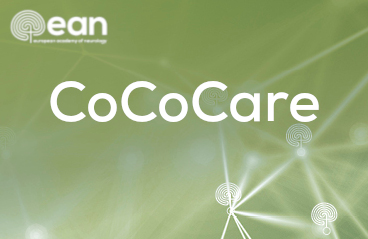by Benedetta Bodini, Isabella Colonna, and Raphael Wurm
Each month the EANpages editorial team reviews the scientific press for recently published papers of outstanding interest to neurologists. Below we present our selection for March 2024 (for our Paper of the Month for March, see here).
- Time to Anticoagulation Reversal and Outcomes After Intracerebral Hemorrhage.
This study, involving 9492 patients with anticoagulation-associated intracranial hemorrhage who underwent reversal interventions, aimed to assess the impact of door-to-treatment times on clinical outcomes. The findings revealed a significant association between a door-to-treatment time of 60 minutes or less and reduced mortality. This underscores the importance of intensifying efforts for a prompt evaluation and treatment of patients experiencing this type of stroke, considered the deadliest among all stroke subtypes
- Spike ripples localize the epileptogenic zone best: an international intracranial study.
In this multi-center study, spike ripples, a combination of epileptic spikes and ripples, have been detected with an automated detector on intracranial EEG recordings and explored as a potential biomarker for the epileptogenic zone in subjects with epilepsy undergoing surgical resection. This study revealed that a higher proportion of spike ripples were removed in subjects with successful outcomes compared to those with persistent seizures after resection. The spike ripple rate showed improved specificity for identifying epileptogenic tissue compared to other EEG-derived biomarkers. This suggests that automatically detected spike ripples may serve as a reliable indicator for locating and treating the epileptogenic zone in patients with epilepsy undergoing surgical resection.
- Risk of Stroke and Myocardial Infarction Among Initiators of Triptans.
Triptans, used for the symptomatic treatment of migraine, have shown vasoconstrictor effects in coronary arteries; however, so far, case-control and cohort studies did not find a higher risk of cardiovascular events in migraine patients treated with triptans. This retrospective study, conducted on data from the nationwide Danish registries with a case-crossover design, aimed to investigate the association between triptan use and ischemic events. The authors analyzed the data of 429612 individuals who obtained a first triptan prescription in the study period (January 1995-August 2022). The authors found that triptan initiation was associated with higher risk of myocardial and ischemic stroke; however, for patients with low cardiovascular risk, the risk to develop an ischemic event after triptan initiation was very low.
- Cerebrospinal fluid biomarker panel for synaptic dysfunction in a broad spectrum of neurodegenerative diseases
This study closes an important gap in the field of neurodegeneration, where markers of pathology are getting ever more accurate but did not fully explain the extent of neuronal damage. Synaptic dysfunction is an attractive target, as mechanistically this is what drives functional impairment in dementia, and the finding that SNAP-25 and 14-3-3 can discriminate between AD and non-AD is certainly encouraging. However, no synaptic protein was associated with performance in the MMSE – one of the most common tests for cognitive function. In conclusion, this important study expands the armamentarium to diagnose AD. The field of biomarkers in neurodegeneration is fast-paced and markers for clinical routine are expected to be robustly detectable in blood, too. Only time will tell if SNAP-25, 14-3-3 zeta/delta or perhaps NPTX2 will have what it takes in this competitive arena.













